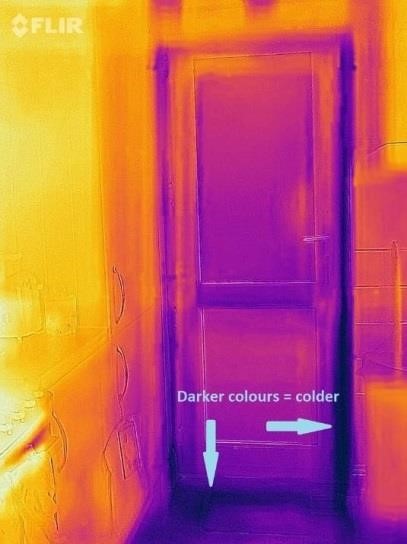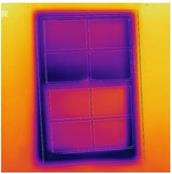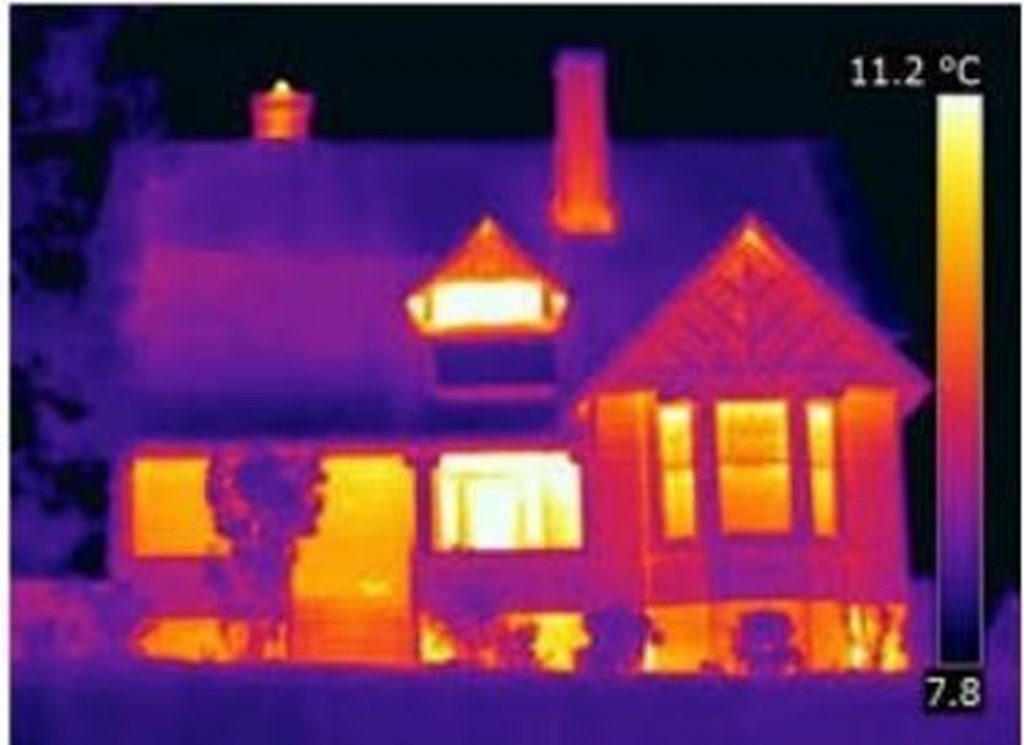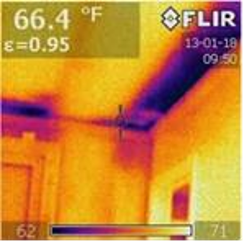This page gives a number of ideas for reducing heat loss identified using thermal imaging cameras. We would love to hear from you if you have tried any of these and found them particularly effective, or if you have any other ideas that have worked to make your home more efficient. Email us on cameras@sustainablecalne.org.uk with any feedback.
External doors
External doors are a frequent source of draughts and heat loss.

- Upgrading or adding draught proofing strips around the door(s).
- Fit a brush-strip or rubber-strip draught excluder.
- Place a cushion draught excluder (“door snake”) along the bottom of the door.
- Fit a curtain behind the door.
- Draught-proof a letterbox using a flap/brush.
- Draught-proof deadlocks with a metal keyhole cover or keyhole draught excluder.
Windows
Heat loss from windows can occur from poor seals around the windows or frames, or directly through the windowpanes themselves.
- Put draught-proofing strips around windows that open.
- Seal any gaps around the window frames themselves.
- Fit new double-glazed windows or secondary glazing.
- Use secondary glazing window insulation film or magnetic strip secondary glazing.
- Add linings to existing curtains.
- Avoid curtains hanging over the radiators so heat goes up behind them.

Chimneys
If you have a chimney for an open fire you may be losing heat through it.

You could go for an inflatable draught excluder, which will fit snugly inside your chimney. Just make sure that it has a small vent, so air can pass through.
Or you might prefer a draught excluder made for the specific size of your chimney.
Roofs
It’s usually possible to check on your attic insulation by viewing the images from the room below. If you can see the rafters with cooler insulation in between, then you most likely don’t have enough insulation.
- Fit more insulation from rolls.
- Spray foam insulation is more expensive but provides very effective insulation. However, we would recommend that you carefully research this, as some mortgage companies are currently not lending against properties with foam insulation.
- Insulating your attic hatches – fitting a square of insulation board to the inside of the hatch and adding draught proofing strips around the edges.

Ground floors
You could be losing heat through gaps in the floor boards – especially if you have a cellar. Generally a hard floor can feel cold.
- Use rugs and carpets to cover floorboards.
- Plug floorboard gaps with a V shaped floorboard gap filler.
- Install under floor insulation.
Walls
Houses typically lose 35% of heat through the walls.
- Install cavity wall insulation or internal insulation if no cavity.
- Cavity wall insulation – if cavity wall insulation has been poorly installed, or been there for a long time, it may settle leaving areas towards the top unfilled. This may be visible on the thermal camera as a line separating warmer and cooler areas of the wall.
- Where radiators have been fitted on external walls, heat loss may be reduced by fitting radiator reflector panels or reflective foil behind the radiator. This can be installed without removing the radiator, and will reflect heat back into the room.
